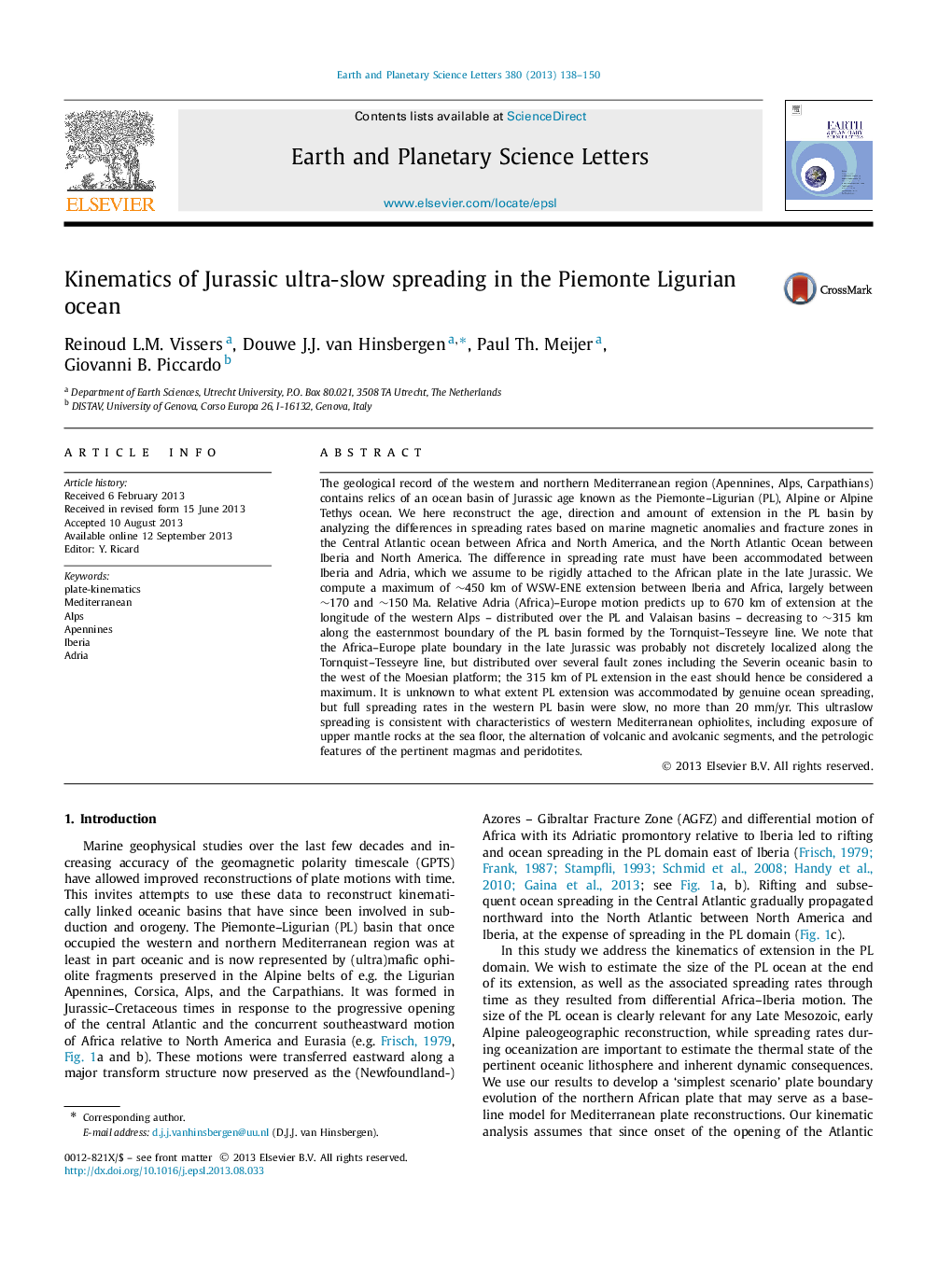| Article ID | Journal | Published Year | Pages | File Type |
|---|---|---|---|---|
| 4677052 | Earth and Planetary Science Letters | 2013 | 13 Pages |
•New kinematic reconstruction of the Piemonte–Ligurian ocean based on Atlantic anomalies.•170–150 Ma extension was 450 km between Iberia and Adria, and max 670 km between Europe and Adria.•The spreading rates were ultraslow, less than max 20 mm/yr.
The geological record of the western and northern Mediterranean region (Apennines, Alps, Carpathians) contains relics of an ocean basin of Jurassic age known as the Piemonte–Ligurian (PL), Alpine or Alpine Tethys ocean. We here reconstruct the age, direction and amount of extension in the PL basin by analyzing the differences in spreading rates based on marine magnetic anomalies and fracture zones in the Central Atlantic ocean between Africa and North America, and the North Atlantic Ocean between Iberia and North America. The difference in spreading rate must have been accommodated between Iberia and Adria, which we assume to be rigidly attached to the African plate in the late Jurassic. We compute a maximum of ∼450 km of WSW-ENE extension between Iberia and Africa, largely between ∼170 and ∼150 Ma. Relative Adria (Africa)–Europe motion predicts up to 670 km of extension at the longitude of the western Alps – distributed over the PL and Valaisan basins – decreasing to ∼315 km along the easternmost boundary of the PL basin formed by the Tornquist–Tesseyre line. We note that the Africa–Europe plate boundary in the late Jurassic was probably not discretely localized along the Tornquist–Tesseyre line, but distributed over several fault zones including the Severin oceanic basin to the west of the Moesian platform; the 315 km of PL extension in the east should hence be considered a maximum. It is unknown to what extent PL extension was accommodated by genuine ocean spreading, but full spreading rates in the western PL basin were slow, no more than 20 mm/yr. This ultraslow spreading is consistent with characteristics of western Mediterranean ophiolites, including exposure of upper mantle rocks at the sea floor, the alternation of volcanic and avolcanic segments, and the petrologic features of the pertinent magmas and peridotites.
